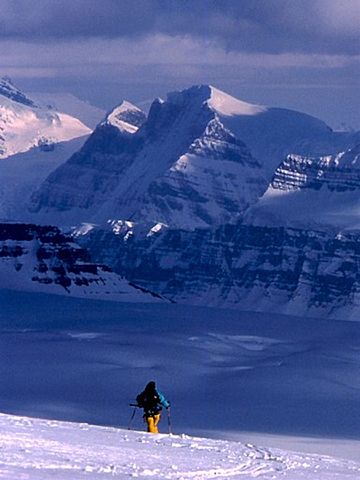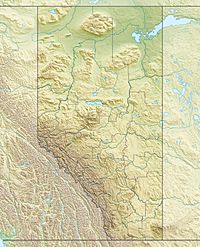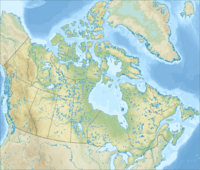Oppy Mountain facts for kids
Quick facts for kids Oppy Mountain |
|
|---|---|

Oppy Mountain from the Columbia Icefield
|
|
| Highest point | |
| Elevation | 3,311 m (10,863 ft) |
| Prominence | 311 m (1,020 ft) |
| Geography | |
| Location | Banff National Park Alberta/British Columbia |
| Parent range | Canadian Rockies |
| Topo map | NTS 82N/14 |
| Climbing | |
| First ascent | 1947 J.C. Oberlin, R. Davis, D.M. Woods |
Oppy Mountain is a cool peak located right on the border between Alberta and British Columbia in Canada. It stands tall at 3,311 meters (about 10,863 feet) above sea level. This mountain got its name in 1918, named after a small village called Oppy in France.
How Oppy Mountain Was Formed
Oppy Mountain is mostly made of sedimentary rock. Think of sedimentary rock as layers of sand, mud, and tiny bits of ancient sea creatures that piled up over millions of years. These layers were laid down in shallow seas a very, very long time ago. This happened from the Precambrian era all the way to the Jurassic period (yes, like the dinosaurs!).
Later, huge forces inside the Earth pushed these rock layers. This event is called the Laramide orogeny. It caused the rock to fold and lift, creating the amazing Canadian Rockies mountains we see today. The older rock layers were even pushed on top of younger ones!
Weather and Climate at Oppy Mountain
Oppy Mountain has a subarctic climate. This means it has very cold, snowy winters and mild summers. Temperatures can often drop below -20 °C (which is -4 °F). With the wind chill, it can feel even colder, sometimes below -30 °C (-22 °F).
If you're thinking about climbing Oppy Mountain, the best time to go is during the summer months. The weather is much milder then, making it safer and more enjoyable for outdoor adventures.



